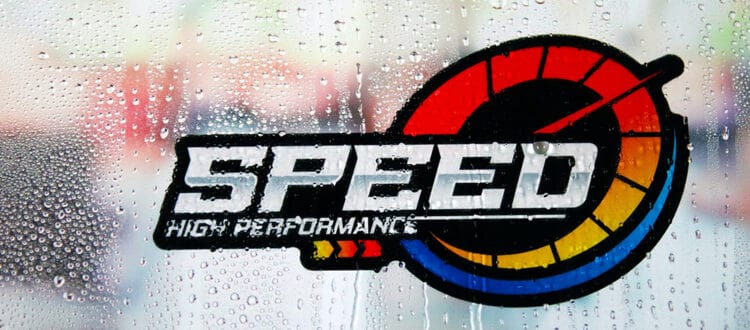Whether it’s for enhancing brand visibility, personalizing items, or sprinkling creativity into spaces, Die cut decals serve as a versatile solution. Intricately cut into various shapes and designs, these high-quality, self-adhesive stickers are engineered to adhere to a plethora of surfaces, allowing easy customization.
With a precut design that eliminates the traditional square or rectangular borders, Die cut decals viewers’ attention directly to the design or message, thereby amplifying their impact. Whether indoors or outdoors, these decals are popularly used across industries due to their durability, impressiveness, and ability to accommodate intricate designs.
What Material are Die Cut Decals Made of?
Die cut decals are typically made from high-quality vinyl — a material well-known for its durability and weather-resistance. This material is designed to withstand harsh elements, including intense sunlight, rain, and snow, making these decals suitable for both indoor and outdoor applications. Depending on the specific needs, these decals may be constructed from different types of vinyl such as calendar, cast, or static-cling vinyl. Also, the design or graphics on these decals are often printed using UV-resistant inks, further enhancing their longevity.
What Vinyl to Use for Die Cut Decals?
 When selecting the type of vinyl for die cut decals, the usage, application surface, and duration of use are crucial considerations. For short-term applications or interior use, calendared vinyl may be appropriate due to its lower cost. However, it’s worth noting that this vinyl type can shrink slightly over time, making it less ideal for long-term uses.
When selecting the type of vinyl for die cut decals, the usage, application surface, and duration of use are crucial considerations. For short-term applications or interior use, calendared vinyl may be appropriate due to its lower cost. However, it’s worth noting that this vinyl type can shrink slightly over time, making it less ideal for long-term uses.
For more prolonged outdoor applications, or if the decal needs to be applied on curved or uneven surfaces, cast vinyl is arguably the best choice. This premium vinyl offers exceptional durability, flexibility, and color stability, resisting shrinkage or fading even in harsh weather conditions.
Lastly, static cling vinyl can be used for decals needed on glass surfaces or in instances where easy removal and reapplication are necessary. Selecting the right vinyl ensures the die cut decals serve their purpose effectively while displaying their designs beautifully.
What is Die Cut Decal Printing?
Die cut decal printing is a specialized process that combines the printing of graphics or designs and precision cutting to create custom-shaped decals. In this process, images or designs are digitally printed on high-quality vinyl using UV-resistant inks to ensure vibrancy and durability. After the printing stage, an advanced cutting machine – guided by a vector file – intricately cuts the decals, conforming to the design’s unique shape rather than to a standard square or rectangular border.
This die-cutting technique imparts a seamless, professional appearance to the finished decals, drawing viewers’ attention solely to the design. As a result, die cut decal printing has become the go-to service for businesses, organizations, and individuals alike, catering to a wide range of applications such as branding, marketing, personalization, and creative expression.
Surface Finishes of Die Cut Decals
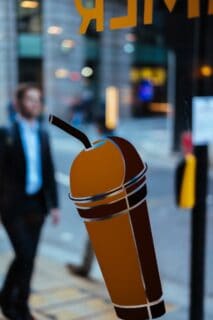
- Glossy finish: High-shine appearance with vibrant colors, commonly used for indoor and outdoor applications
- Matte finish: Subdued, non-reflective appearance with a soft and smooth texture, often used in interior spaces
- Semi-gloss finish: Medium sheen level that balances the characteristics of both glossy and matte finishes
- Laminated finish: Added protective layer for increased durability, especially against scratches, weather conditions, and UV exposure
- Textured finish: Provides tactile variation, available in various patterns such as carbon fiber, woodgrain, or brushed metal
- Reflective finish: High-visibility accents for increased safety or attention-grabbing effects, used for safety signs or nighttime decorative elements
- Transparent or frosted finish: Subtle designs with light transmission, commonly applied on glass surfaces or to achieve a partially see-through effect
Shape Die Cut Vs. Exact Die Cut Decals
Within the realm of die cut decals, two major categories emerge: shape die cut and exact die cut decals. Shape die cut decals involve cutting the vinyl material around the general outline of the design, leaving a small border of extra vinyl around it. This approach allows for easier handling, installation, and increased durability at the design edges. It is an especially suitable choice for more intricate designs that require additional support or when the decal application process may be complicated.
In contrast, exact die cut decals entail cutting the vinyl to match the precise contours of the design without any visible extra material or border. These decals offer a sleek, seamless look that appears as if the design has been painted directly onto the surface. Consequently, exact die cut decals demand meticulous attention to detail but provide an unmatched professional finish. When comparing the two options, the choice ultimately depends on the desired outcome and the specific requirements of the design and the application surface.
What are the Benefits of Die Cut Decals?
- Customization: Offers immense flexibility in terms of design, shape, color, size, and finish, enabling personalization to match specific needs or branding requirements.
- High visual impact: The elimination of square or rectangular borders draws attention directly to the design, creating a higher visual impact.
- Durability: Made from high-quality vinyl and often printed with UV-resistant inks, Die cut decals are resistant to weather, UV radiation, and scratches, making them suitable for long-term indoor and outdoor use.
- Easy application and removal: Die cut decals are designed for simple application and can typically be removed without leaving residue or damaging the surface.
- Versatility: Can be used on various surfaces, including glass, metal, plastic, wood, and more, providing a wide range of application opportunities.
- Cost-effective: Compared to other promotional or decorative solutions, Die cut decals offer a more cost-effective avenue, particularly for small businesses and individual users.
- Professional appearance: The precision of the die cutting process gives a professional finish to the decals, enhancing the perceived quality and value of the product or brand.
Best Applications of Die Cut Decals
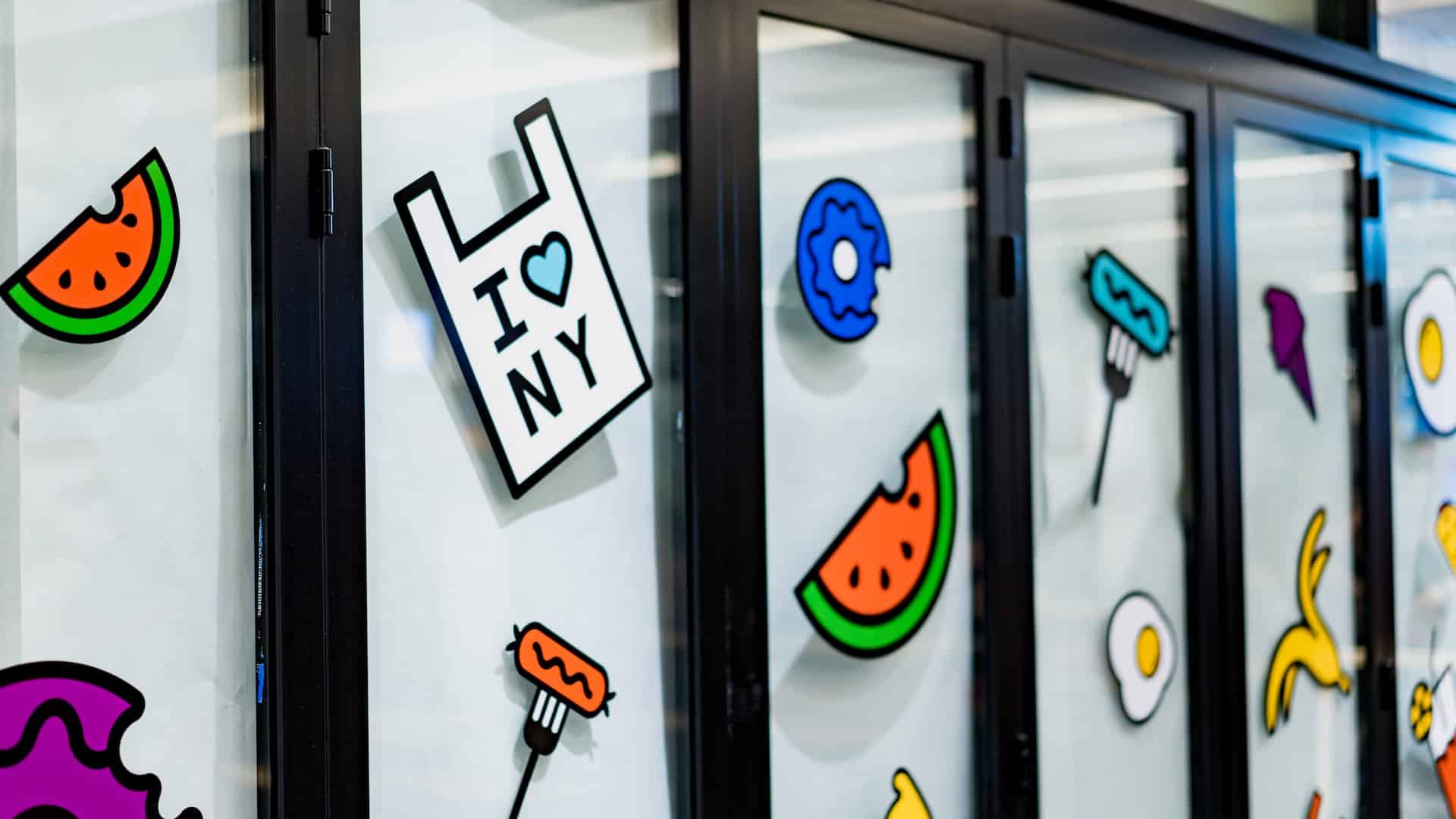
- Vehicle Graphics: Custom branding or artwork for cars, trucks, motorcycles, or boats.
- Product Branding: Decoration, information, or branding on products like electronics, appliances, or toys.
- Promotional Material: Giveaways at events, trade shows, or product launches for marketing and promotional strategies.
- Window Display: Graphics for storefront or business windows, or interior glass surfaces.
- Wall Decals: Artistic or informative elements for interior design in homes, offices, or business spaces.
- Safety Warnings: Indicators for hazard areas or equipment in workplaces, or safety measures in public spaces.
- Laptop or Gadget Skins: Personalization for electronics, adding individual flair or company branding.
- Outdoor Advertising: Used on signboards, kiosks, or billboards for high-visibility promotions or advertisements.
- Helmet Stickers: Decoration or branding for sports gear, particularly in motorsports and other helmet-requiring activities.
- Custom Labels: Tailored solutions for packaging, gifts, or handmade products, providing a personalized touch.
How Do You Apply Die Cut Decals?
- Clean the Surface: Wipe the application surface thoroughly, removing any dust, debris, or oils. Ensure the surface is dry before proceeding.
- Prepare the Decal: Remove the backing paper if your decal has any. Be careful not to touch the adhesive side to avoid reducing its stickiness.
- Plan Your Application: Position the decal on the surface without pressing it down. A perfect spot would be where the decal is flat and well-centered.
- Apply the Decal: Starting from one edge, press the decal onto the surface, slowly smoothing it out to the other side. Use a flat edge like a credit card wrapped in a soft cloth to prevent air bubbles.
- Smooth Out Bubbles: If there are any air bubbles, you can press them out towards the edge of the decal using the flat edge.
- Remove the Transfer Tape: If your decal came with a transfer tape, gently peel it off starting from one corner, ensuring the design stays on the surface. If any edges lift off during this process, press them back onto the surface and carefully try again.
- Review and Finish: Give your decal a final review, checking for any bubbles, and smooth them out if necessary.
Finally, give it a gentle wipe for a clean, finished look.
Remember, patience and accuracy are key when applying die cut decals for best results.
Are Die Cut Decals Removable?
Die cut decals strike an optimal balance between maintaining adherence to various surfaces for extended periods and ease of removal when required. Although the duration of adhesion depends on specific factors such as vinyl type, surface condition, and environmental exposure, they are generally designed to be removable without causing damage to the surface underneath. The adhesive used is strong enough to hold the decal in place over time but allows for gentle and straightforward removal, often without leaving any residue.
Also, the process typically does not harm the surface, preserving its original condition. However, it’s important to keep in mind that die cut decals may not be reusable once removed, as they may lose their shape and adhesion capabilities. To sum it up, die cut decals provide a convenient and aesthetically pleasing temporary solution, considering their removability and minimal impact on the application surface.
What’s the Difference Between Kiss Cut Decals and Die Cut Decals?
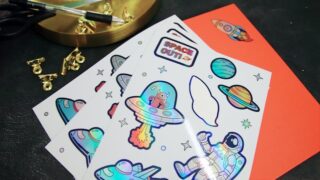 The differentiation between kiss cut decals and die cut decals lies primarily in the unique cutting techniques employed in their production. A kiss cut decal is cut through only the vinyl layer — but not the backing paper — forming a peel-out sticker while leaving the backing intact. This procedure creates a square or rectangular “frame” of backing around the decal, which offers ease of handling, especially for smaller or more complex designs.
The differentiation between kiss cut decals and die cut decals lies primarily in the unique cutting techniques employed in their production. A kiss cut decal is cut through only the vinyl layer — but not the backing paper — forming a peel-out sticker while leaving the backing intact. This procedure creates a square or rectangular “frame” of backing around the decal, which offers ease of handling, especially for smaller or more complex designs.
To the contrary, die cut decals are cut through both the vinyl and the backing material, all the way down to the shape of the design. This process results in a decal without any excess material or border, allowing the design to stand alone with a professional, seamless appearance. The choice between the two comes down to the specific requirements of the decal’s design, application, and end use. Despite the subtle difference in cutting techniques, both kiss cut and die cut decals offer high levels of customization, durable performance, and vast application opportunities.
Are Die Cut Decals Waterproof?
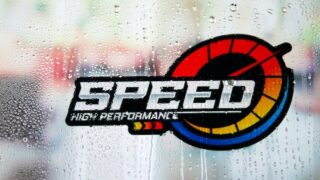 Indeed, they are typically waterproof, thanks to their vinyl construction and the often-utilized UV-resistant inks. Vinyl, being a robust and versatile material, is inherently resistant to water and various weather conditions. As a result, it lends exceptional durability to die-cut decals, allowing them to maintain their visual appeal and adhesive quality even when exposed to rain, moisture or damp conditions.
Indeed, they are typically waterproof, thanks to their vinyl construction and the often-utilized UV-resistant inks. Vinyl, being a robust and versatile material, is inherently resistant to water and various weather conditions. As a result, it lends exceptional durability to die-cut decals, allowing them to maintain their visual appeal and adhesive quality even when exposed to rain, moisture or damp conditions.
Moreover, the resistant inks utilized in their printing process ensures that the printed design or message does not wash off or fade over time, even with substantial water exposure. This characteristic strongly supports the use of die-cut decals for outdoor applications, including vehicles, signboards, maritime equipment, and outdoor equipment, among other possibilities. Thus, for users looking for a durable, lasting decal solution that can withstand weather changes, die cut decals make an excellent choice.
How Long Do Die Cut Decals Last?
They are praised for their durability and longevity, lasting for years when properly applied and maintained. Typically, outdoor die cut decals can last between 3 to 5 years, while indoor applications may last even longer, reaching upwards of 7 to 10 years. However, numerous factors can affect their lifespan, such as the quality of the printing, the durability of the adhesive, the type and condition of the surface they are applied to, and how much exposure they get to the elements like sun, rain, or wind.
Moreover, regular cleaning and maintenance can notably extend the life of the decal. While die cut decals have an impressive lifespan, they are not completely immune to wear and tear over time. But, considering their cost-effectiveness, resistance to elements, and long life, they certainly offer great value for money over a considerable period.
Conclusion
Die cut decals are an exceptional tool for effective branding, personalization, and information dissemination, all thanks to their versatility, visual appeal, and broad applicability. Their durability and resistance to elements, including being waterproof, make them suitable for both indoor and outdoor uses, ensuring long-lasting color and quality even in challenging conditions. In essence, they are a powerful and practical solution for those seeking a lasting impact in countless applications. VISIT THIS PAGE for die cut decal custom printing.
Popular Posts:

